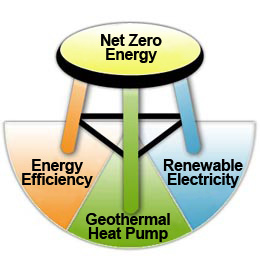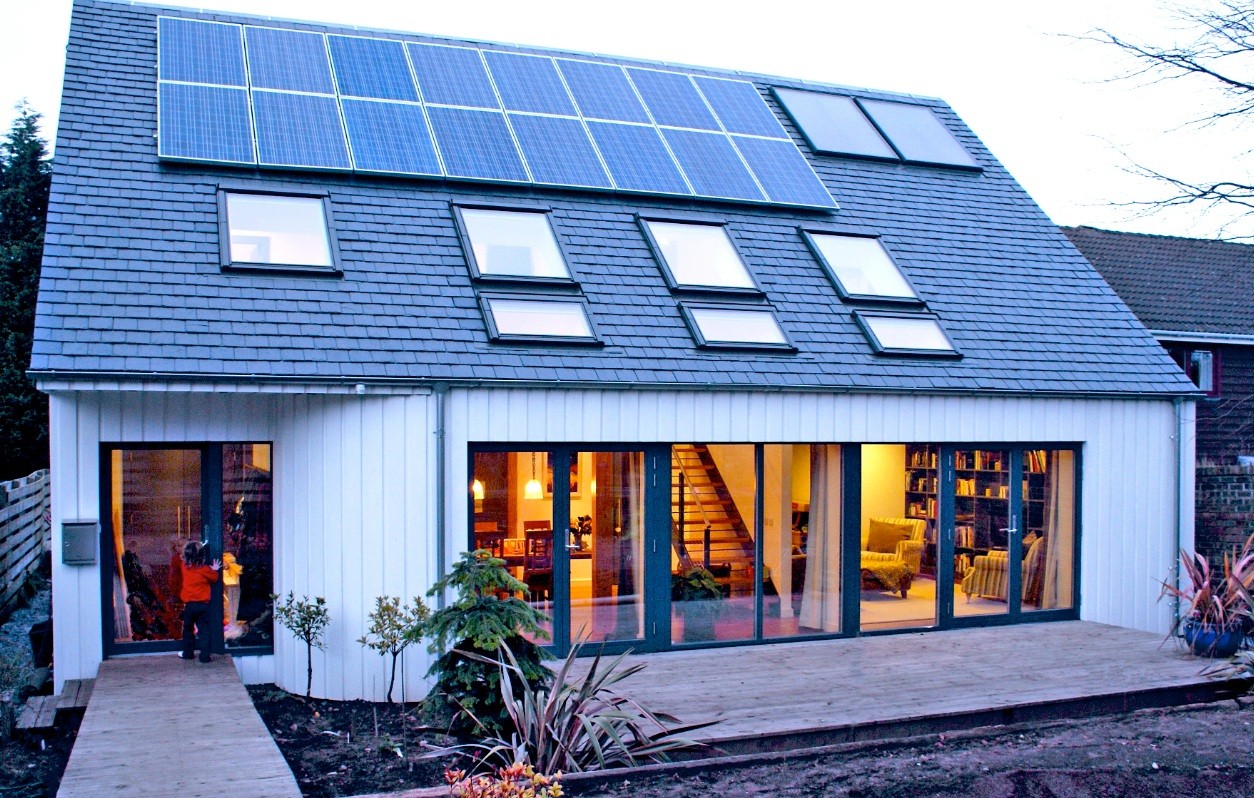About All-Electric and Net-Zero Buildings
The gold standard of construction now and into the future
All Electric Buildings

New Builds. More and more all-electric homes and buildings are being erected throughout New York State. They cost less to construct than if gas lines had to be installed and they have lower utility bills. This forward progress will accelerate starting in 2026 when the All-Electric Building Act goes into effect. You can benefit too by embracing this trend by retrofitting your building.
All-electric buildings will have air source or geothermal heat pumps as their HVAC system. They will have induction stoves for cooking, hybrid water heaters or geothermal desuperheaters for hot water and perhaps heat pump clothes dryers. All these appliances are more efficient than gas or conventional electric ones.
Retrofits. Existing buildings will often need to be made “electrification ready” before they can become all-electric. These can be Investments to increase energy efficiency, such as reducing the heating and cooling loads by weatherization (sealing and insulating) and by replacing appliances with EnergyStar® ones. Bringing the electric system up to code and increasing the service to handle higher loads also make the building ready to become all-electric.
Keep in mind an all-electric building will have a higher electric bill, but there will be no fossil fuel bill so the overall utility cost will go down. And if these buildings have solar panels they can become net-zero.
Net-Zero Buildings
A net-zero energy building produces all the electricity it needs over the course of the year. However, if it is still burning fuels it is not zero emissions.

The combined use of solar photovoltaic (PV) and a geothermal heat pump system is a perfect merger of technologies to achieve a net-zero energy and emissions building. The solar generates all electricity for the home and the heat pump, which provides the heating and cooling.
For most building retrofits, actual net-zero energy and emissions can be achieved only with a combination of geothermal and PV technologies, since geothermal consumes less electricity than air source. Buildings with an air source heat pump may achieve near-net-zero energy and emissions.
Passive House, a specific design developed in Germany (Passivhaus) design is also a good option for achieving net-zero.
Passive House Design
Passive houses are energy efficient, comfortable, and affordable. They are generally new-builds, not retrofits of existing homes since most homeowners are not willing to lose interior living space to accommodate the design. The passive house target for certification is a measured performance of at least 30.0 KBTU/SF (about 8.8 kW/SF) annually, benchmarked from utility bills.

A passive house utilizes passive sources of heat, such as the sun, appliances such as refrigerators, freezers, computing equipment, and people. In addition, the design includes thick walls and foundations, an airtight building layer, continuous insulation, and special siting and sizing of thermal windows that minimize heat transfer. Due to this tight building envelope, well-designed ventilation using heat or energy recovery ventilators is necessary.
All these features further reduce the heating and cooling loads of these homes. One small air source heat pump and a small PV system will keep a passive house comfortable and be net-zero. If it is all-electric it will also be net-zero emissions too.
